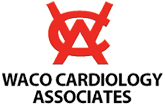Atrial fibrillation is a disorder where the heart’s upper chambers, called atria, beat irregularly. The beats are extremely fast and irregular, essentially a trembling movement. When this occurs, the atria do not pump effectively, and the blood is not actively pumped from the atria into the ventricles. Then the blood stagnates in the atria and is prone to clotting. If part of the clot breaks off and circulates with the blood out of the heart, it can become trapped in an artery and stop the flow of blood to the part of the body to which that artery delivers oxygen and nutrients. If it blocks blood flow to part of the brain, a stroke occurs. Treatment of atrial fibrillation Atrial fibrillation is the most common abnormal heart rhythm (arrhythmia) that cardiologists see. Some patients are non-symptomatic, and some have intolerable palpitations, shortness of breath, chest pain, lightheadedness and/or fatigue. Most patients fall somewhere in the middle. Medications to help control heart rate and/or restore a regular heart rhythm are used, especially if the patient has symptoms. Anticoagulant treatment can prevent the formation of clots. In the initial treatment of atrial fibrillation, heparin or any similar medication may be used to reduce the risk of clots. These medications act fast. Generally, they are administered intravenously or by injection. Later on, the medication that is most commonly used to prevent blood clots is warfarin (Coumadin). Warfarin is very effective in reducing the risk of stroke but entails significant risks, and the patient must be closely monitored by the doctor. Newer anticoagulants have recently been developed that could require less arduous monitoring and/or be safer or more effective.
Caring for the hearts of Central Texas Since 1971
(254) 399-5400

